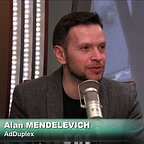Music-Making for Developers and Other Techies 101
I’ve been developing software for more than 25 years. I’ve been creating music in my head for even longer and sometimes that even manifested in real-world experiments. While I took my programming hobby more and more seriously my music-making aspirations stayed just that.
Throughout my software development career, I’ve tried to get into making music more seriously more times than I care to admit. But only about two years ago I decided to get into it more systematically, if you wish, and I finally succeeded. And by “succeeded” I don’t mean that I have number one hits under my belt now or switched careers — no. I mean that two years later I’m still making music almost every day, I’ve released more than 30 tracks on all the major streaming platforms, my skills are constantly improving, and, most importantly, I’m still enjoying it and have no plans to stop.
I think that the best teachers are the ones who have a natural teaching talent or a well-developed teaching skill. I am not that, obviously. But the second-best option, in my opinion, is not the expert in the subject matter but someone who has learned the subject recently and still remembers the time when they didn’t know one or the other “simple” concept. It’s the reason why senior developers often have a hard time mentoring new devs — they just can’t remember the time they were in those new developer shoes.
Getting back to music production… After two years of fairly intensive (albeit hobbyist “after-work” learning) I think I’m at an exact spot of actually knowing the basics yet remembering the exact moments when some things clicked. And that’s why I decided to write this book.
For developers?
Why is it called “for developers”? Good question! Actually, no specific reason. And I think it should be applicable to anyone, not just programmers. Having said that, I will probably explain some concepts in a way that make sense to my developer mindset and may be less trivial or pointless to non-developers. For example, most music software called Digital Audio Workstations or DAWs (more on that later) count musical time (so-called bars) starting at 1 by default. So, your typical 16-bar rap verse would start at 1 and run until… 17. For most of us developers this looks unnatural. My default template changes that, and I start counting at 0. Do non-developers find this useful or logical? I don’t know. Maybe. Maybe not. But it definitely makes sense for most developers.
Additionally, I think making music on a computer is a very “natural” hobby for software developers. Yes, it would probably behoove us to have some hobby away from the chair and the screen. On the other hand, these days making music is very similar in the approach to making software. It doesn’t require any special physical abilities, being able to make things with your hands, not just your head, or pretty much anything else your average programmer doesn’t possess. If you can code and you can enjoy listening to music, there’s a very high probability that you have all the basic skills you need to make it.
Book outline
So, what do I plan to cover in this book? I’ll start at the very beginning and discuss what you need to get started. I know as geeks we all like toys so I’ll go a bit further and suggest what you may want but don’t necessarily need right away. Then we will go into an overview of a Digital Audio Workstation software.
One of the main reasons why I quit in my previous attempts at music-making, as I see it from today, was an unbalanced approach to learning and making. I was either trying to make stuff without knowing what I was doing. This becomes frustrating very quickly and then you quit. Or swinging into an opposite extreme I didn’t allow myself to mess around until I’ve learned stuff and that gets boring before you even make anything. I think a big part of my “success” in this iteration was figuring out a balanced routine and that’s what I’ll share with you in one of the future chapters.
After we get the very basics out of the way we’ll try to make a simple piece of music without going into details. Just to give you a taste.
In the next part I’ll make an attempt at giving you a simple music theory primer.
Then we will go into plugins. We will learn the basics of synthesizer programming, working with various effects, audio recording and samples.
We will finish this introductory book with a brief discussion of mixing and mastering, and ways to distribute your music.
Sounds good? Let’s go…
What you need…
This book focuses on making music. Not playing, not writing, but the art and technology of making a piece of recorded music. It has never been easier (technically speaking) to produce professionally sounding music than it is today. And it will only get easier. And, likely, cheaper.
At this stage you only really need 3 things to get started producing world-class tracks:
- Computer
- Music software commonly referred to as DAW (Digital Audio Workstation)
- Headphones
Yes, there are a lot of things you may want. The things that would make your music journey more enjoyable, improve your workflows, and the quality of the end results. But having these three is totally enough to get started and to produce amazing results. Especially in genres that don’t demand live instruments or clean vocals.
Let’s talk about these three…
—
In the next chapter we discuss computers for music production.
— —
This is a chapter from the book I’m writing. I will be posting a new chapter each week. But there’s a way to get new chapters early or even get everything I’ve written so far and support this endeavor. Click here for the details.
